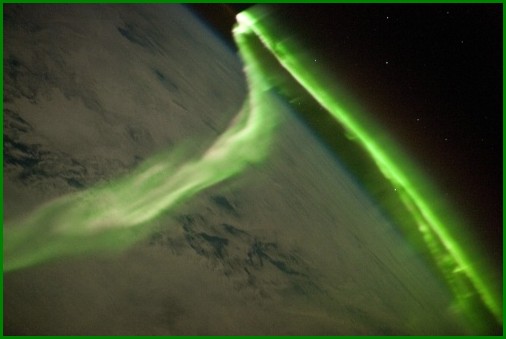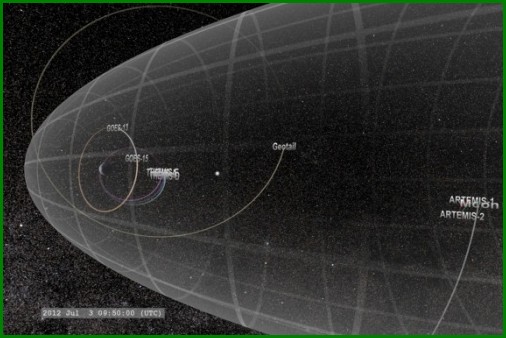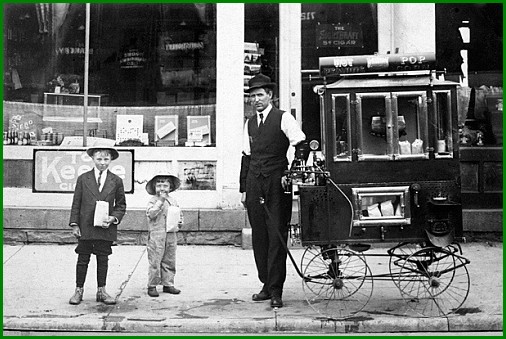The source of space weather around Earth Space Weather Channel found around the Earth found by scientists from the U.S. and Japan, under the guidance of Vassilis Angelopoulos of the University of California at Los Angeles. Using long-term data sets from spacecraft THEMIS, ARTEMIS satellite and the Japanese space agency, they measured the total energy supply space weather around Earth.

Although what exactly causes the solar wind all these powerful phenomena in the vicinity of the earth, and no one doubted understand exactly where the energy from it is given into our magnetosphere, a long time without success. (Photo by NASA.)
This is comparable to the Electric Power Plants of all terrestrial plants. The process took more than 30 minutes, - says Mr. Angelopoulos. - The number of energy released was equivalent to an earthquake of 7.1 magnitude on the Richter jackals.
The main mechanism of release of energy called the reconnection of magnetic field lines of the Earth. The energy of particles of the solar wind interaction with these lines gradually moves them two fronts squeezing tail of the magnetic field, located on the other side of the planet, which is opposite to the Sun. When the lines are shifted so that the two previously-open are closed, the magnetic field energy is betrayed particles at the connection point, turning them into the accelerated plasma that can get this or that direction, but in much of the world aspires to.
This causes the activity in the radiation belts of the planet, as well as in areas that are close to the magnetic poles.
Previously, the researchers note, all attempts to observe this process failed due to the use of only one satellite: because of the continuous movement of fronts to keep track of all failed. On the contrary, the group was able to fix all the devices thirty minutes of the process.
At last we have found something that feeds the northern lights and the Earth's radiation belts - emphasizes Mr. Angelopoulos. - We can keep track of all this energy, seeing when and where it is converted into other forms of energy.
The full picture of the energy storage and transfer it in the magnetosphere science is able to significantly improve the prediction of the energy dissipation after the reconnection of magnetic field lines. In other words, the accuracy of forecasts of space weather will be higher.

The fact that part of the spacecraft involved in the surveillance, was at some distance from the Earth, has finally allowed to detect the elusive process.
Someday, these phenomena could be registered in other planetary systems, as the energy of reconnection depends on the capacity of the magnetosphere. Recall that the same auroras on Jupiter is much superior to the earth, or any other in the Solar System.
The study is published in the journal Science.
Prepared according to the University of California at Los Angeles.
Special Space Weather Event Reports
http://swc.gsfc.nasa.gov - On July 12, 2012 Active Region 1520 produced a long duration X1.4 class solar flare (peaking at 16:52 UT), and was associated with an Earth-directed CME (Coronal Mass Ejection), and Solar Energetic Particle event. Based on preliminary heliospheric modeling carried out at NASA GSFC Space Weather Center, it is estimated that the CME may impact Earth, Messenger, Spitzer, MSL, Mars. Simulations indicate that the leading edge of the CME will reach Earth at about 2012-07-14T10:20Z (plus minus 7 hours). The roughly estimated expected range of the geomagnetic storm Kp index is 6-8 (moderate to severe). Solar Energetic Particle (SEP) events were detected at SOHO, GOES, and STERO B starting on July 12, 2012 17:50 UT) due to this flare and associated CME. Updates will be provided when available.
See space weather alerts: http://swc.gsfc.nasa.gov/main/2012071...
http://swc.gsfc.nasa.gov/main/2012071...
http://swc.gsfc.nasa.gov/main/2012071...
Read more: http://www.nasa.gov/mission_pages/sun...
What happens when a CME hits Earth? NASA Scientists answer top space weather questions: http://youtu.be/8OcqH_l6Mso
This video was created using:
http://helioviewer.org/ - Solar and heliospheric image visualization tool.
Integrated Space Weather Analysis system (iSWA): http://iswa.ccmc.gsfc.nasa.gov
Join us at
http://www.facebook.com/nasaswc
http://gplus.to/nasaswc
https://twitter.com/NASASpaceWxCtr
NASA Space Weather Apps for Android and iPhone:
http://bit.ly/iswaandroid & http://itun.es/iPv5NM
To learn more about NASA Space Weather Center visit: http://swc.gsfc.nasa.gov
The answers to many questions about the Sun and Space Weather can be found at: http://go.usa.gov/EKn
Also check out http://www.thesuntoday.org/ for solar facts & space weather
Content by Sandro Taktakishvili Yihua Zheng, and Leila Mays
Edited by Leila Mays
Music by Julian Vu http://julianvu.com/ (used with permission)
Credit: NASA/SDO, NASA/STEREO/SECCHI, SOHO/ESA&NASA, NASA/Goddard Space Flight Center
